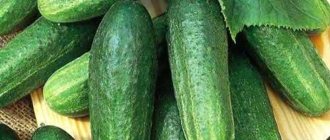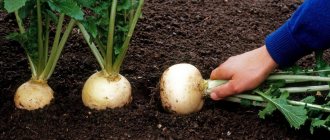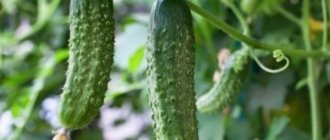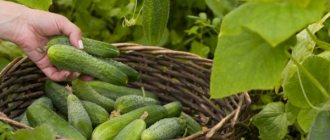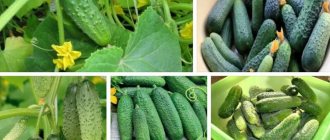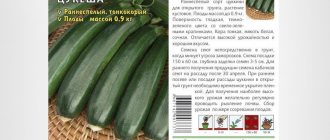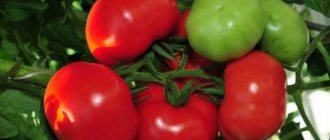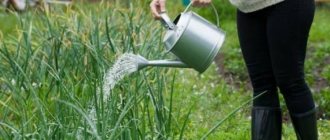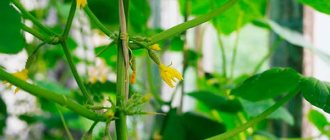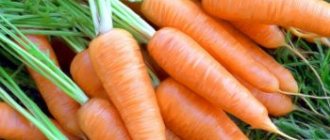Dutch breeders develop cucumber hybrids that are distinguished by good germination, disease resistance, and early ripening. The fruits have excellent taste and commercial qualities, since these hybrids are obtained by crossing strong varieties. So, the best cucumbers for growing in greenhouses and open beds are discussed later in the article.
Most popular varieties
Dutch breeders have done their best and created a wide variety of varieties with interesting characteristics. Dutch cucumbers can be:
- self-pollinating;
- not requiring pollination;
- pollinated by insects.
Varieties are distinguished:
- Angelina F1;
- Herman F1;
- Bettina F1;
- Hector F1;
- Dolomite F1.
We'll talk more about their features below.
How do Dutch seeds differ from domestic ones?
As a rule, the Dutch produce cucumber hybrids labeled f1 - they cross two varieties into one to produce high-quality seeds that are disease-resistant and have excellent taste. But, unfortunately, the hybrid is not capable of producing a harvest the next year, so the seeds will have to be purchased again.
Most of the planting material is self-pollinating, which makes it possible to grow cucumbers of Dutch selection not only in the open ground, but also in greenhouses. There are also pollinated varieties - they have a richer cucumber taste and smell, and are crispier when pickled.
The choice of seeds depends not on the advice of a neighbor, but on the conditions for growing vegetables in a personal plot. To do this, you need to consider the following parameters.
Where will the seeds be planted - in a greenhouse or an open bed.
- Groundwater level.
- The quality of the soil in the garden.
- Weather conditions in the region.
- Desired taste preferences.
- Winter storage method.
Taking these factors into account, Dutch cucumber seeds are chosen that are suitable for every gardener.
Pollinated by bees
Not all Dutch cucumbers are self-pollinating. Some varieties require bees to propagate pollen from one flower to another. Bee-pollinated cucumbers include:
- Levina F1;
- Madita Kukumber F1;
- Pioneer F1;
- Sonata F
Levina F1
It has medium ripening periods and is recommended for cultivation in garden beds. Cucumber has the following characteristics:
- cucumber color – green;
- weight – 75 grams;
- size – 11 centimeters;
- the taste is soft, pleasant;
- not bitter.
Ripening occurs 57 days after the appearance of mass shoots. Strong immunity.
Madita cucumber F1
Madita cucumber requires the presence of bees to form ovaries. Don't forget about this if you breed them in a greenhouse. In addition to strong immunity, it is endowed with a rich, mild taste. Description of the characteristics of the variety:
- weighs up to 100 grams;
- size – 11 centimeters;
- color – green.
The peel is uneven, with a large number of tubercles. Does not taste bitter when eaten.
Pioneer F1
The ripening speed is average compared to other varieties, which is compensated by its unpretentiousness to the growing region. Does not pollinate on its own.
Characteristics:
- bush height - more than 2 meters;
- the harvest is ready for harvest in 54 days;
- size – no more than 11 centimeters;
- weight – 85 grams.
The yield from 1 square meter is 6 kilograms. The indicators are not large, but stable and do not change over time.
Sonata F1
A low-growing bush with a large number of vines. Bees are required for pollination. Demanding of sunlight. The yield is 11 kilograms per 1 square meter. Cucumbers are tasty and juicy, with a pleasant crunch. Average dimensions range from 8 to 10 centimeters, weight – 100 grams. The fruiting period is 48 days.
Note!
It tolerates low temperatures calmly and, if necessary, is sown in the attic for seedlings in late March, early April. See also
Description of the Ekol cucumber variety, features of cultivation and care
Read
Features and Benefits
The main distinguishing feature of Dutch seeds is the increased percentage of germination. After transplanting to a permanent location, the seedlings take root well. In terms of these two parameters, the seed material of Dutch breeders has no equal.
When producing seeds, the Dutch focus on high quality preparation, which consists of several stages:
- During the heat treatment process, the seed material undergoes hardening. It improves adaptation to adverse weather conditions and protects against a number of diseases characteristic of vegetable crops.
- At the dressing stage, the seeds are treated with pesticides. The drugs protect future plants from diseases and parasites. At the same time, the drugs used do not change the taste of the fruit and do not affect the development of plants.
- During calibration, seeds are sorted by size. Selected specimens always have good germination. The defect rate in standard Dutch seed packaging is very low.
- Seed material for sale is packaged in packaging made of special material. It protects the seeds from the penetration of moisture and air before sowing.
The entire stage of seed production takes place on automated lines under strict control. Therefore, buyers in most cases are satisfied with the quality of the purchased products. The advantages of varieties and hybrids of Dutch selection include:
- the possibility of planting in shelters and unprotected beds;
- high resistance to almost all insects and pathogens;
- universal purpose of fruits;
- excellent taste of greens, lack of bitterness;
- high productivity subject to all care rules;
- the correct shape of cucumbers;
- the presence of bee-pollinated varieties and varieties that do not require pollination.
The best varieties of cucumbers for open ground
Among the favorites most often sown in open ground are the following varieties:
- Angelina F1;
- Satin F1;
- Hector F1;
- Ajax F
Angelina F1
A universal, self-pollinating cucumber, the maximum yield of which is achieved when planted in beds. It is not demanding of sunlight and grows steadily even in shaded areas. Strong immunity reduces the risk of losing crops due to unexpected illness. The fruits are medium in size and in normal condition do not exceed 12-14 centimeters in length.
Satina F1
Satin cucumbers do not require pollinators to form ovaries. They are grown in large agricultural farms and for personal use. Fruits begin to form after 40 days from the appearance of sprouts. The weight of one cucumber fluctuates around 110 grams. The seeds are small and soft, almost imperceptible when consumed.
Hector F1
This hybrid is pollinated only by bees. The height of an adult bush is 80 centimeters. It is unpretentious to the environment and is grown in many regions of Russia. The weight of the fruit reaches 100 grams with a length of 11 centimeters.
Ajax F1
It has a large bush, with a lot of vines. Pollinated by bees. Ripens early, producing cucumbers weighing 100 grams. Up to 5 kilograms of product are collected from one square meter.
Parthenocarpic varieties of Dutch selection
The list of cucumbers from Holland contains the most parthenocarpics, hybrids that do not require pollination. Such plants successfully bear fruit in shelters and produce crops in open-air ridges.
The following cucumbers are successfully grown by Russian gardeners:
- Madita - belongs to the group of early hybrids (38-43 days). Madita F1 cucumber requires almost no bush formation and produces a limited number of side shoots. Greens are up to 8 cm long, dark green in color, dense. At the genetic level, there is an absence of voids in the pulp and bitterness;
- cucumber Karina - ultra-early, resistant to olive spot, TMV. It is distinguished by the beautiful appearance of gherkins and excellent taste. Genetically without bitterness;
- Pasamonte - this cucumber is well known to Russian summer residents. In the State Register - since 1997. A productive, unpretentious, flexible hybrid. The fruits are gherkin type, the first batches ripen in 43-45 days. In the axils there are up to three ovaries. Purpose – universal, usually used in preservation and marinades;
- cucumber Monolith F1 - refers to plants of the indeterminate type, with moderate foliage. In the axils there are 3-4 ovaries, the leaves are small, petiolate. Greens are smooth, with thin skin, bright green in color with numerous light stripes. The pubescence is dense and white. The length of the fruit is up to 12 cm, the pulp is juicy and dense, of good taste;
- Baby Mini is a mid-early hybrid from the Seminis company. It is famous for its short (up to 7-9 cm) greens of excellent taste. The Baby Mini cucumber begins to bear fruit on the 50th day and is superior in yield to many hybrids - up to 16-18 kg/m²;
- cucumber Platinum F1 is a powerful hybrid of a balanced type. The greens are dense, with thin skin, up to 7-9 cm long. The fruits are harvested in the size of pickles. This cucumber is demanding in terms of nutrition and is highly regenerative;
- cucumber Magdalena F1 - recommended for all regions of Russia, in the State Register - since 2009. Collecting greens for pickles and gherkins. The fruits are small, smooth, with tubercles and white spines. Productivity – up to 8 kg/m²;
- cucumber Profi F1 is an early productive parthenocarpic. Gives the best results in shelters, up to 12 kg per 1 m². The yield is stable, the plant quickly regenerates after stress and unfavorable conditions. The greens are dense, smooth, finely lumpy, excellent for preservation;
- Bettina is an early cucumber, included in the lists of the State Register of the Russian Federation since 2010. Originator – agricultural company Nunhems BV. Grown in open ground, on windowsills at home. Ripens in 38-43 days.
On a note!
Parthenocarpic hybrids are often called self-pollinating, but this is not true. In parthenocarpics, fruit formation occurs without pollination; the property is inherent at the genetic level. Parthenocarpy can be of varying degrees, depending on the cucumber variety.
For greenhouses and greenhouses
When conditions do not allow growing vegetables in open ground, purchase seeds of those varieties that feel confident in a greenhouse. In Dutch cucumbers, these varieties include the following.
Pasadena F1
Characteristics:
- the first cucumbers are formed on the 49th day after germination;
- medium-sized bush;
- It is preferable to grow in greenhouses, but if necessary it can also be grown in open ground;
- The yield reaches 14 kilograms.
It has a pleasant, fresh taste and aroma.
Bettina F1
Basic indicators:
- Harvesting begins on the 38th day after emergence;
- the weight of one cucumber is 75 grams;
- size – 8 centimeters;
- rich, slightly sweet taste.
Ceres F1
It has a unique appearance and dimensions. Their skin is covered with small wrinkles, creating grooves along the entire length of the vegetable. The length of one fruit reaches 35 centimeters, and its weight is up to 290 grams.
Ecole F1
Bees are not needed for Ecol pollination and ovary formation. Cucumbers are small, no more than 9 centimeters. Weight – around 65 grams. It is bred in greenhouses in all regions except the North Caucasus. Fruit ripening occurs 45 days after the sprouts appear.
Baby
Baby Mini is a salad gherkin variety that does not require natural pollinators for the formation of ovaries. It has a high yield, and up to 16 kilograms of product are collected from one square meter. Maximum weight – 160 grams. The length does not exceed 11 centimeters. It has good reviews among experienced summer residents who grow cucumbers for their own use.
Karin
Karin is an early variety of cucumbers, the fruits of which ripen 40 days after germination. When grown in favorable conditions, up to 14 kilograms of cucumber are harvested per square meter. The mass of the cucumber is 70 grams, the size is 10 centimeters.
Features of Dutch hybrids
There are several differences between Dutch seeds:
- To grow them, you need to follow a special planting algorithm.
- Seeds have a high percentage of inputs.
- They can withstand low temperatures, the disease is not scary, because many have strong immunity.
- Give a constant harvest in large quantities
- They have a fast ripening period.
- There is no bitterness in the fruits.
Read about the cucumber variety Masha F1 here.
Fruits grown from Dutch seeds are used both fresh and for canning.
Features of planting seeds from Holland
First you need to select good seeds from all. Planting material is placed in water with a small amount of salt. They are kept for about 10 minutes. After this period, some seeds will float to the surface. They are prohibited from being used for planting. The material that remains at the bottom of the dish will be used.
Such seeds are thoroughly washed with water and planted:
- Each seed is placed in the soil, after moistening it.
- You need to pour a little earth on top to form a tubercle of one and a half centimeters.
- Lightly press the soil with your palm.
- Abundant watering is carried out in open ground.
- The container with seeds must be covered with film. This will help the plant grow faster. In a closed container, moisture evaporates slowly and has a beneficial effect on seed growth.
- As soon as the seedlings sprout, they need to be kept in a sunny area for about 20 days.
- After this, the plant is sent to the greenhouse.
- It is necessary to regulate the temperature in the greenhouse area - at least + 25 degrees.
Gardeners recommend cutting off the tendrils of several plants after planting. The appearance of new tendrils indicates that it is time to feed all the cucumbers.
After the seedlings have grown, you need to choose the right place on the site for planting. Choose a sunny area that is not exposed to strong winds. The best soil for Dutch varieties is loamy or sandy loam. You should absolutely not choose acidic or heavy soil for growing. It is best to plant the Dutch variety after cabbage, potatoes, tomatoes and buckwheat.
Read about how to grow onions in open ground here.
Gardeners recommend preparing the soil in advance for planting cucumber seedlings. You need to start preparing 3 weeks in advance. Peat, compost or humus must be added to the soil. Prepared soil is poured into each pot for future seedlings. You need to add ash, sawdust and a little humus to it. If you follow all the tips for preparing the soil, then the cucumbers will quickly sprout and be strong and disease-resistant.
To get a rich harvest from these seeds, you must follow all planting recommendations:
- It is necessary to plant the seeds in small pots. The optimal time is the end of March or the beginning of April.
- You need to leave a small distance between the seeds, about 2-3 cm. Then it will be more convenient for the cucumbers to grow.
- As soon as the planting material hatches, it needs to be transplanted into cubes. You need to add manure, peat and a little sand to the soil.
- After 30 days, you can move the plant to a greenhouse.
- Plant seedlings to a depth of no more than 35-40 cm. Add manure to the trench for fertilizer.
- It is necessary to make the distance between each bed at least 70-80cm.
- Before each planting, carry out the process of loosening the soil.
Read about how to grow tomatoes in open ground in this material.
Angelina F1
Grown from Dutch cucumber seeds. An important advantage is the early ripening of the plant. Also, Gollan cucumbers do not require complex care; they produce a large harvest. Plants are considered self-pollinating.
From the seeds, cucumbers grow approximately 14-15 cm in length. The fruits are juicy, without bitterness. During the season they are added to salads, and canned for the winter. The plant is highly resistant to various diseases. Not subject to pest attacks. However, gardeners still recommend carrying out preventive treatment of cucumbers.
Good variety of cucumbers Dolomite F1
The variety of these seeds bears fruit even earlier than Angelina. Cucumbers turn out dark green. Small bumps are visible on the skin. This appearance attracts many gardeners who choose the Dolomite variety.
The plant has medium vigor. The harvesting process is greatly simplified due to the openness of the plant. After exposure to negative weather conditions, the variety quickly recovers. His regeneration rate is at the highest level.
